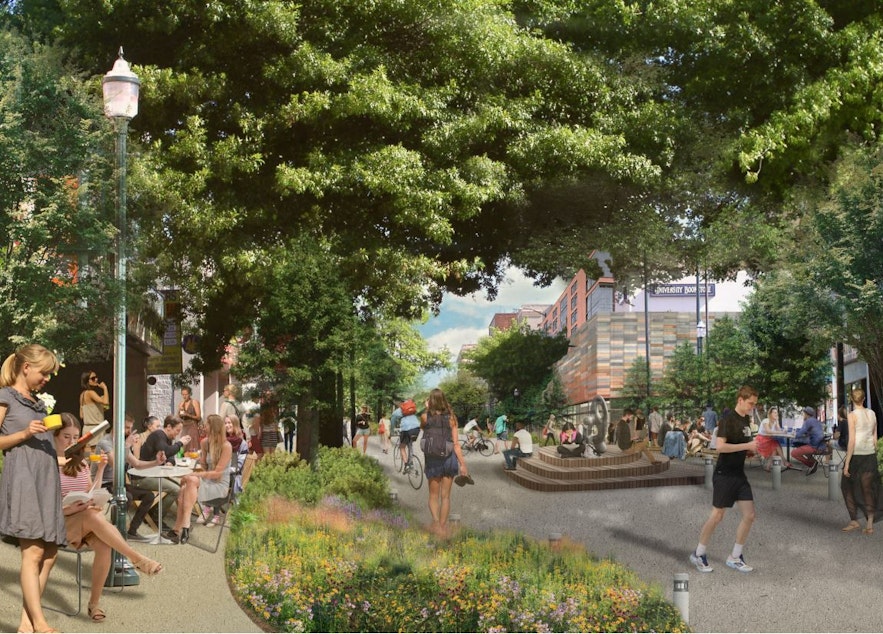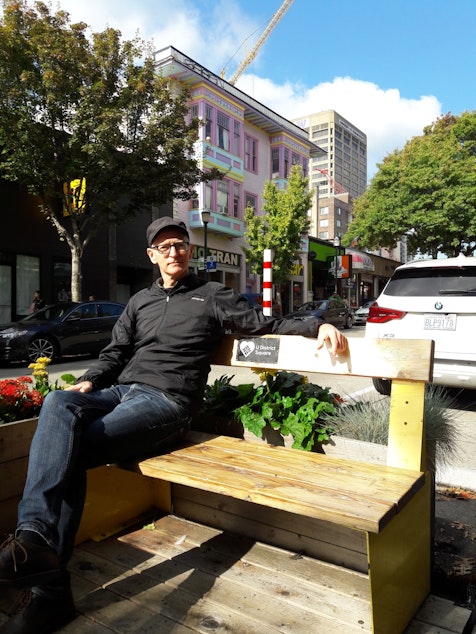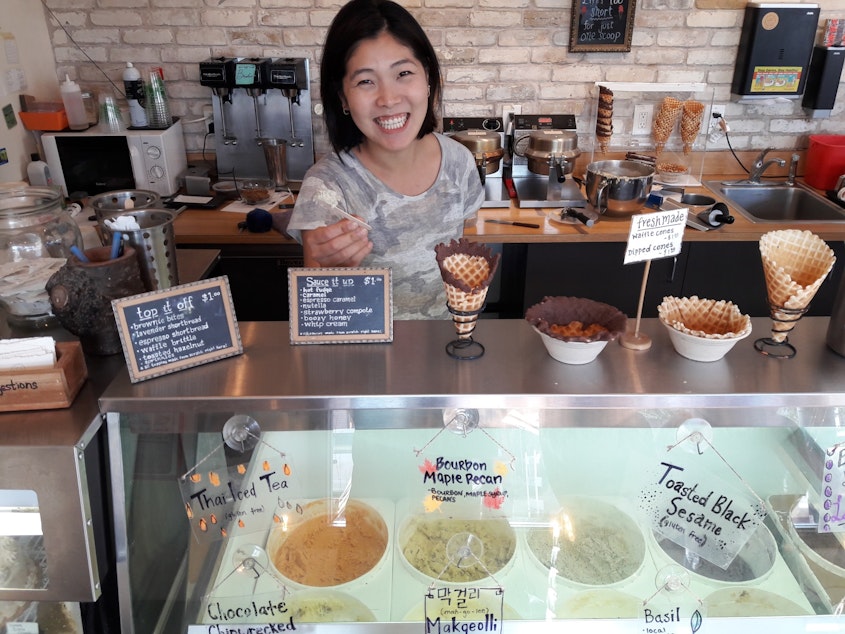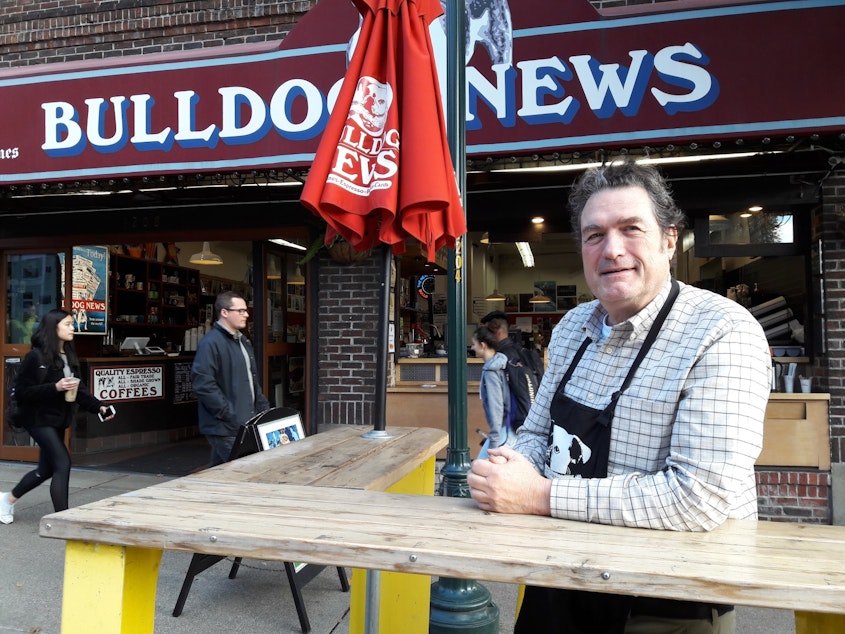Should some streets only be for pedestrians? These U-District advocates think so

Seattle's University District has four of the city's most dangerous intersections. More than 100,000 cars, bikes, buses and people all squeeze through the neighborhood's crowded arterials every day.
When the U-District light rail station opens in 2021, things will get even busier. But a group of neighborhood stakeholders has a plan to make things flow better.
The corner of Brooklyn Avenue NE and NE 45th Street is one of Seattle's worst.
“The north entrance to the station will be right there," said Cory Crocker, a U-District neighborhood advocate, pointing to the new light rail site. "So it's pretty close to the intersection.”
During rush hour, cars, buses, bikes and pedestrians fight for space here, daring each other to enter the crosswalks first.
"We’ve all been there, where we failed to look to the left, when we turned right. Or we failed to consider the movement of a truck, or a bicycle," Crocker said. "And that’s where it’s dangerous."

Sponsored
Crocker’s big group of community stakeholders came up with an idea to try and ease the tension: Make each street really good at carrying one or two modes of traffic. And encourage the other modes to move to other streets designed specifically for them.
The flow on 45th Street would support cars and buses, not bikes. But bikes coming over I-5 from Wallingford would be enticed to swoop down to 43rd, where they'd find a slower, safer approach to the light rail station.
Cars could still drive on 43rd, Crocker said, just at a slower speed.
Under the U-District Mobility Group's plan, University Way, or “The Ave,” would prioritize pedestrians, replacing more of its parking with sidewalk cafes and "parklets." In six years, Crocker said, the Ave could even evolve into a pedestrian-only street.
“We think that if we were to fully embrace a pedestrianized Ave, in the future, the U-District could be a destination for people from around the city and beyond, for tourism" said Crocker. "People would choose to come to the U-District and hang out along a pedestrianized street, like you’d find in Europe.”

Lois Ko, owner of ice cream shop Sweet Alchemy on the Ave, has mixed feelings about the U-District mobility plans. On the one hand, she likes how the plan calls for much wider sidewalks, as she says the current sidewalks will not be able to handle the people pouring out of the coming light rail station. “We definitely need some kind of change,” she said.

On the other hand, will a pedestrian oriented street discourage her delivery drivers from dropping off sesame seeds and rice wine? She doesn’t want to see them shut out. “Please don’t forget about our businesses and our needs, too,” she said.
Sponsored

Doug Campbell, who owns Bulldog News, believes a pedestrian-only street could draw people here. Just look at the U-Village, an outdoor mall not too far from here, he said.
“It’s an extremely friendly pedestrian space," he said, where people love to spend time. But how do most people get there? They drive. “It’s critical to have parking. U-Village shows us that. U-Village is building one garage after another.”
Campbell says when the city replaces street parking with café tables and plantings it needs to place parking nearby.
The stakeholders behind the U-District Mobility Plan will have to address concerns like that as they promote their plan. They want Seattle’s elected officials to adopt their ideas. To do that, they’ll need to present as united a front as possible.
Sponsored
Want to learn more? The U-District Small Business Association sponsored a panel discussion Monday night called "Can the Ave Survive?"




